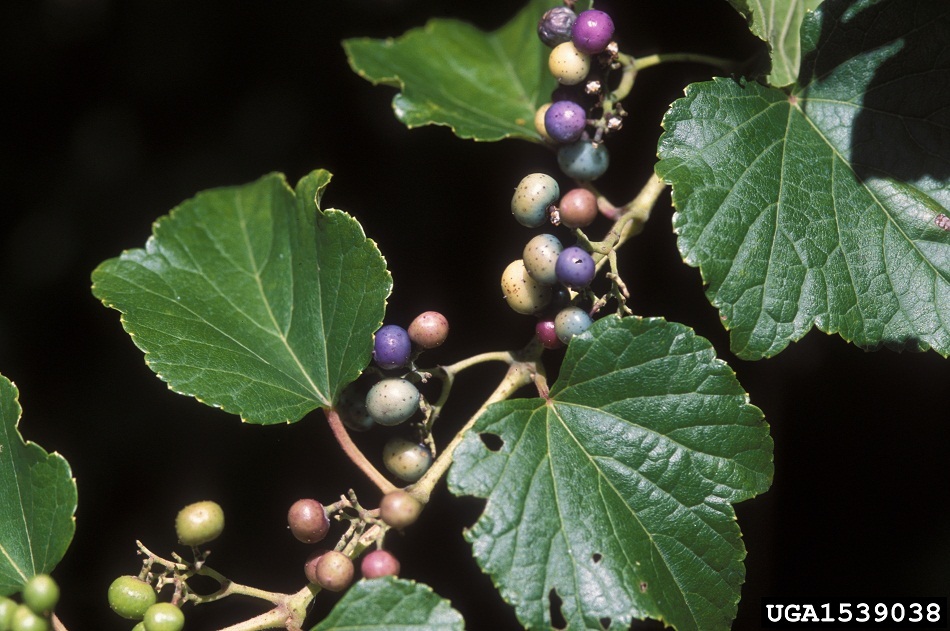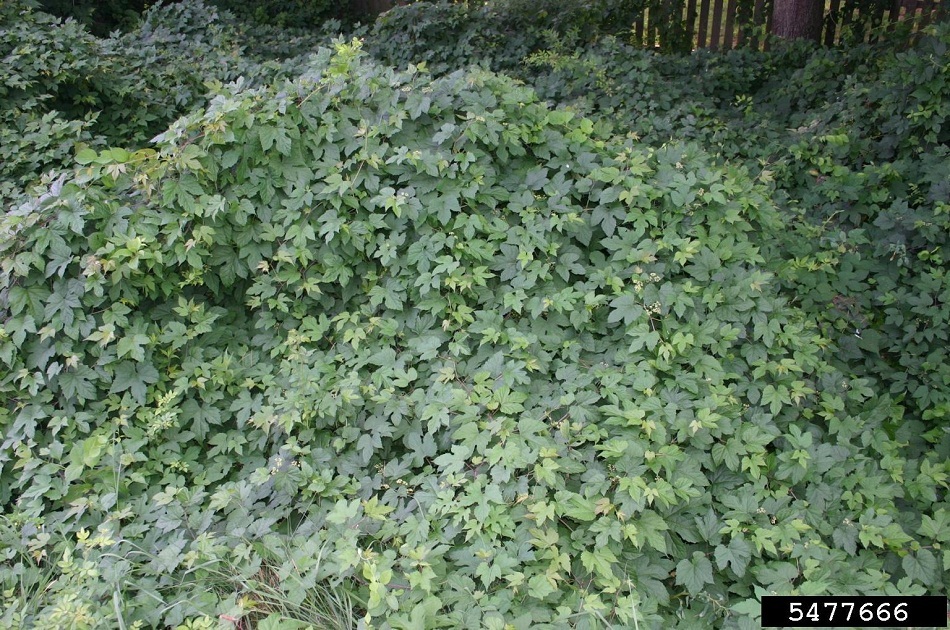|
Having trouble viewing this email? View it as a Web page.
August 3, 2022
August Weed of the Month: Porcelain Berry
Julia Dellick, Minnesota Department of Agriculture
Porcelain berry (Ampelopsis brevipedunculata) is a vigorous, deciduous, woody vine in the grape family (Vitaceae) that climbs via tendrils to grow up to 20 feet. It was introduced to the United States from its native range of temperate Asia as a landscape plant in the 1870s. Since then, porcelain berry has become widespread on the East Coast and is a particular problem in the southeastern states. It is slowly spreading westward and has been found scattered throughout Minnesota, Wisconsin, and Iowa. In Minnesota, porcelain berry has been found naturalizing in Rice and Ramsey counties.
 The leaves of porcelain berry are alternate and simple, with coarsely-toothed margins. They can be can be either heart-shaped or deeply lobed with 3-5 divisions, depending on their location along the plant stem.
Click here to download the photo
Though related to native grapevines, there are identifiers to distinguish between the two plants. Porcelain berry has alternate and simple leaves that have coarsely toothed margins that can be either heart-shaped or deeply lobed with 3-5 divisions. The undersides of the leaves and new wood have small hairs. The fruits of this plant are shiny berries that mature throughout September and October in Minnesota; the berries vary in color ranging from blue, pink, purple, and cream.
 Porcelain berry has a distinctive speckled berry, with widely variable coloring ranging from blue, pink, purple, and cream.
Click here to download the photo
Porcelain berry is not tolerant of heavily shaded areas, such as mature forest interiors, and prefers full to partial sun. It is found on forest edges, riverbanks, and woodland openings and is primarily associated with disturbed sites. Porcelain berry forms dense mats that overtake low vegetation and small trees which reduce species diversity and wildlife habitat.
Once established, porcelain berry vines are difficult to control. For all management options, infested sites will need to be monitored and treated repeatedly until the seedbanks are depleted and eradication can be confirmed. However, you may remove early infestations through pulling any young vines by hand and being sure to remove the entire root. Do not spread soil that contains any root sections of the plant as dislodged root pieces have been suggested as potential methods of vegetative reproduction and spread. If the plants are pulled while in fruit, they should be bagged and destroyed.
 Porcelain berry infestations can outcompete native plants and form monocultures which reduce species diversity and wildlife habitat.
Click here to download the photo
Due to porcelain berry’s attributes, it is listed as a Restricted Noxious Weed in Minnesota. This means that porcelain berry can’t be sold, propagated, transported, or planted legally in the state. For more information about porcelain berry, visit the MDA species page.
MEDIA: For more information on Weed of the Month, contact Allen Sommerfeld, MDA Communications, at allen.sommerfeld@state.mn.us or 651-201-6185
|